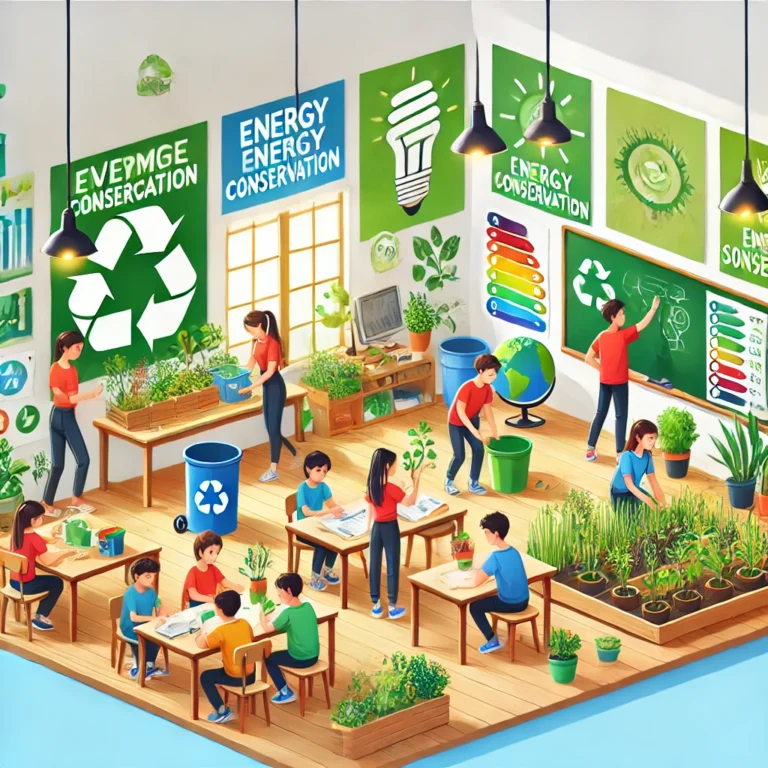As the world faces pressing environmental challenges, educating students about sustainability has never been more important. Teachers play a crucial role in fostering environmental awareness and inspiring the next generation to take action. This blog explores various environmental education activities that can be integrated into the classroom, helping students understand the importance of sustainability and how they can contribute to a greener future.
1. Hands-On Recycling ProjectsEngage students in hands-on recycling projects that demonstrate the impact of waste and the importance of recycling. Activities could include creating art from recycled materials, organizing a school-wide recycling drive, or building a compost bin for the classroom. These projects help students see the tangible effects of their actions and encourage them to adopt sustainable practices in their daily lives.
2. Outdoor Learning ExperiencesTaking students outside the classroom for environmental education can be incredibly impactful. Organize nature walks, garden projects, or field trips to local parks or conservation areas. These experiences allow students to connect with nature, observe ecosystems firsthand, and understand the importance of protecting natural habitats. Outdoor learning also encourages a sense of responsibility for the environment.
3. Energy Conservation ChallengesIntroduce energy conservation challenges to teach students about the importance of reducing energy consumption. This could involve classroom activities where students monitor energy use, learn about renewable energy sources, and brainstorm ways to save energy at school and home. By making energy conservation a fun and competitive activity, students are more likely to develop long-lasting sustainable habits.
4. Climate Change SimulationsUse simulations and interactive models to help students understand the science of climate change. Tools like the En-ROADS Climate Change Simulator allow students to experiment with different policies and practices to see their effects on global temperatures. These simulations can be integrated into science or social studies lessons, helping students grasp the complexities of climate change and the importance of collective action.
5. Water Conservation LessonsTeach students about the significance of water conservation through interactive lessons and activities. This could include measuring water usage in daily activities, designing water-saving devices, or creating awareness campaigns about the importance of conserving water. Understanding the value of water and the impact of water scarcity can inspire students to take action in their communities.
6. Eco-Friendly Classroom PracticesIncorporate eco-friendly practices into daily classroom routines. This might include reducing paper use by going digital, using non-toxic cleaning products, and encouraging students to bring reusable containers for snacks and lunches. By modeling sustainable practices, teachers can show students how small changes can make a big difference in reducing their environmental footprint.
7. Sustainable Agriculture ProjectsEngage students in sustainable agriculture projects, such as starting a classroom garden or participating in a farm-to-school program. These projects teach students about sustainable food production, the benefits of local food, and the importance of healthy eating. Gardening also provides a hands-on learning experience that connects students with the environment and fosters a sense of responsibility for their food choices.
8. Environmental Advocacy and AwarenessEncourage students to become environmental advocates by creating campaigns that raise awareness about environmental issues. This could involve designing posters, writing persuasive essays, or organizing events focused on sustainability. By empowering students to speak out on environmental issues, teachers can help them develop leadership skills and a commitment to making a difference.
9. Integrating Sustainability Across SubjectsIntegrate sustainability topics into various subjects, from science and geography to art and literature. This could include studying the environmental impacts of historical events, exploring sustainability themes in literature, or using math to calculate carbon footprints. Cross-curricular integration helps students see the relevance of sustainability in all aspects of life and learning.
10. Partnering with Environmental OrganizationsCollaborate with local environmental organizations to bring real-world expertise and resources into the classroom. Guest speakers, workshops, and community service projects can enrich students’ understanding of environmental issues and provide opportunities for hands-on learning. Partnerships with environmental groups also help students connect classroom learning with community action.
Conclusion
Environmental education is essential in preparing students to address the environmental challenges of the future. By incorporating these activities into the classroom, teachers can inspire students to become environmentally conscious citizens who are committed to sustainability. Through hands-on projects, outdoor learning, and cross-curricular integration, students can develop the knowledge and skills needed to make a positive impact on the environment.


